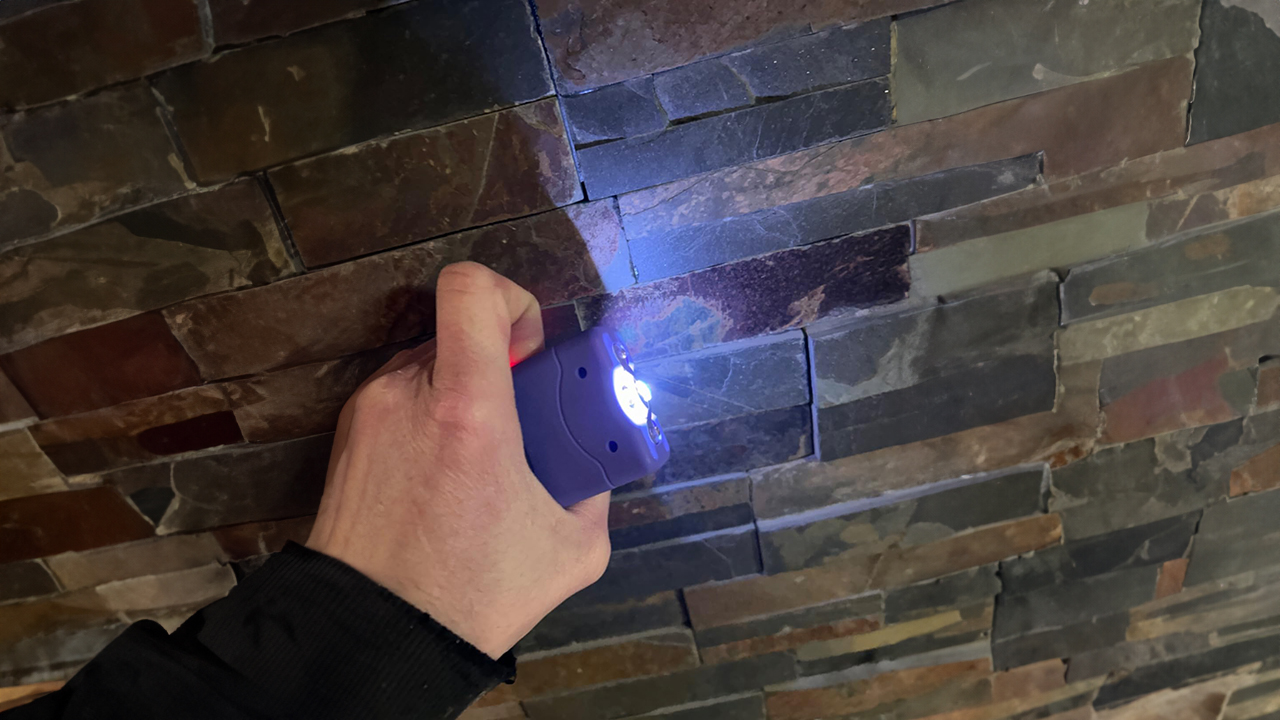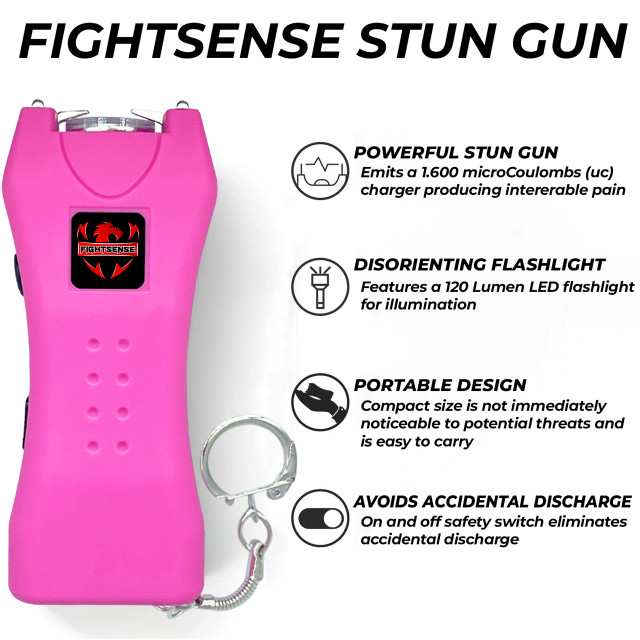Exploring the Impact of Stun Gun Voltage
21st Jun 2024

Stun guns are popular self defense devices known for their ability to incapacitate an attacker by delivering a high-voltage electric shock. The effectiveness and safety of a stun gun are often discussed in terms of its voltage.
What is Stun Gun Voltage?
Voltage, measured in volts (V), is a measure of the electric potential difference between two points. In the context of stun guns, voltage refers to the difference in electric potential that the device can generate across its electrodes. When a stun gun is activated, it generates a high-voltage, low-current shock intended to disrupt the muscular and nervous system of the target temporarily.
The Role of Voltage in Stun Guns
- High Voltage: Most modern stun guns range from 20,000 to several million volts. High voltage increases the likelihood of penetrating clothing and delivering an effective shock. However, voltage alone does not determine the effectiveness of a stun gun. Keep in mind, the maximum voltage that can jump across two standard stun gun contact points is much less than the advertised amount on the average stun gun. The actual voltage physically possible is just 30,000 volts for contacts spaced 0.4 of an inch apart. This number increases for contacts farther apart, but it won’t approach millions or even hundreds of thousands of volts on a stun gun or stun baton.
- Current (Amperage): While voltage is crucial, the current (measured in amperes or milliamperes) is what affects the body. Stun guns typically operate with low current to avoid causing permanent damage. The combination of high voltage and low current is what makes stun guns safe yet effective.
Voltage and Effectiveness
Higher voltage stun guns can be more effective because they are more likely to penetrate clothing and deliver a strong enough shock to incapacitate an attacker. However, the effectiveness also depends on other factors such as:
- Duration of Contact: Longer contact time increases the effect.
- Location of Contact: Certain areas of the body are more sensitive.
- The Design of the Stun Gun: Ergonomics and ease of use can affect how effectively the device can be deployed in a high-stress situation.
- Charge Delivered: According to the National Institute of Justice, subjects reported pain on average at 0.5 microcoulombs (µC), and intolerable pain at 1.0 microcoulombs (µC). Therefore, for the purpose of testing, anything over 0.5 µC is likely to cause pain, while 1 µC or greater is likely to cause intolerable pain. This measure of charge, rather than just voltage alone, plays a critical role in determining the stun gun's effectiveness.
Stun guns typically have voltage ratings ranging from a few thousand volts to several million volts. Common voltage categories include:
- Low Voltage: 20,000 to 100,000 volts
- Medium Voltage: 100,000 to 500,000 volts
- High Voltage: 500,000 to 1 million volts
- Ultra High Voltage: Over 1 million volts
How High Can Stun Gun Voltage Go?
We can determine the maximum voltage a conductor, such as air, can handle using the formula
Emax=3×106 volts (V) per meter (m). Let's apply this to calculate the dielectric breakdown of air with contacts spaced 0.01 m (1 cm) apart.
Emax=3×106V/m
For a distance of 0.01 m:
Emax=3×1,000,000V/m
Emax=3,000,000V/m
Emax=3,000,000V×0.01m
Emax=30,000V
Thus, when the stun gun contacts are 1 cm apart, the voltage cannot exceed 30,000 volts.
Insights into Stun Gun Voltage Capabilities
When considering stun guns, it's crucial to understand that the maximum voltage capable of jumping across two standard contact points is significantly less than what is often advertised. For instance, under optimal conditions, the actual voltage that can bridge the gap between these points is limited to just 30,000 volts when the contacts are spaced 0.4 inches apart. While this distance can vary, the achievable voltage won't reach into the millions or even hundreds of thousands, contrary to common marketing claims for stun guns or stun batons.
| PRODUCT | STUN GUN |
| TASER® Pulse+ Subcompact Shooting Stun Gun | 50,000 |
| TASER® Pulse Subcompact Shooting Stun | 50,000 |
| TASER® Police Grade Stun Gun | 50,000 |
| Jolt Tactical Police Rechargeable Stun Gun Flashlight 93M | 93,000,000 |
| Jolt Police Tactical Rechargeable Stun Gun Flashlight 75M | 75,000,000 |
| Streetwise™ Touchdown Rechargeable LED Stun Gun 29M | 29,000,000 |
| Streetwise™ Lady Lifeguard Stun Gun 16.5M | 16,5000,000 |
| Bestex Compact Mini Thunder Stun Gun 100,000-Volts | 100,000 |
TASER devices prioritize sturdy contacts over high voltage, offering both dart and contact stun capabilities. A minimum of 25,000 volts is typically needed to cause pain through clothing, but 50,000-100,000 volts enhance effectiveness, ensuring sufficient incapacitation for escape or alerting authorities.
The Maximum Voltage at Different Distances Between Stun Gun Contacts
| DISTANCE BETWEEN STUN GUN CONTACTS | EMAX |
| 0.5 cm / 0.005 m | 15,000 v |
| 1.0 cm / 0.01 m | 30,000 v |
| 1.5 cm / 0.015 cm | 45,000 v |
| 2.0 cm / 0.02 m | 60,000 v |
Fightsense’s Most Powerful Stun Gun: Your Best Choice
Voltage is not the only factor that matters in stun gun strength. The voltage’s effectiveness hinges on the charge behind it. Charge, which is the electrical current multiplied by time, is measured in microcoulombs (µC).

In the realm of stun guns, the charge delivered, measured in microcoulombs (µC), is a critical factor in determining the device's effectiveness. A higher microcoulomb rating means a more intense shock, leading to greater pain and muscle disruption. According to the National Institute of Justice, pain is typically felt at 0.5 µC, and anything at or above 1.0 µC can cause intolerable pain.
The Fightsense stun gun, boasting a formidable 1.600 microcoulombs (µC) of charge, stands out as a top contender for personal safety. This high charge capacity ensures it delivers a potent shock capable of swiftly incapacitating an attacker. Compact and portable, it's designed for ease of use and effective defense in critical situations. Trusted for its reliability and equipped with additional features like built-in flashlights, the Fightsense stun gun with 1.600 µC offers unparalleled security and peace of mind.
FAQ's:
SHOULD I GET SOMETHING MORE POWERFUL THAN A TASER?
You don’t need hundreds of thousands or millions of volts. This is partly because your stun gun won’t use all those volts and partly because you can incapacitate a target with much less than a million volts.
DOES VOLTAGE CAUSE THE CRACKLING SOUND?
Higher voltage may cause a louder crackling sound, but the crackling sound a stun gun makes is not a good indicator of its ability to deter an assailant. When the gun’s contacts are properly pressed against someone’s skin, they make little to no audible noise.
DO STUN BATONS HAVE HIGHER VOLTAGE?
Stun batons, on average, advertise higher voltage because they are larger and have more space for the electronics required. However, like stun guns, they might not always be able to use this voltage effectively.
